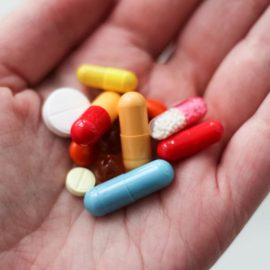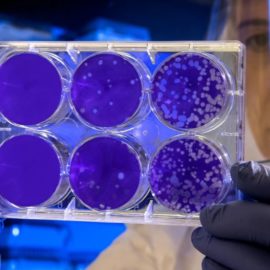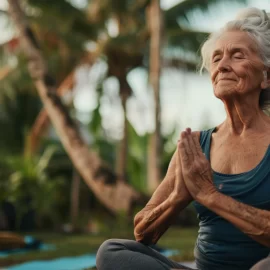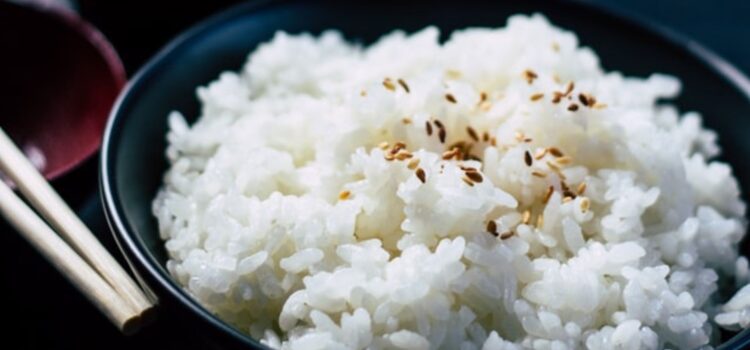
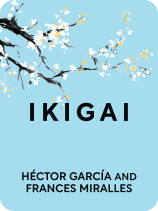
This article is an excerpt from the Shortform book guide to "Ikigai" by Héctor García and Francesc Miralles. Shortform has the world's best summaries and analyses of books you should be reading.
Like this article? Sign up for a free trial here .
What are the key principles of the Okinawan diet plan? How can eating the Okinawan way help you live both longer and better?
A variety of research has uncovered the principles of Okinawan diet plan for promoting health and longevity. Understanding these principles is important to anybody who’s interested in the pursuit of optimal living.
Keep reading for the three principles of the Okinawan diet plan.
What Are the Key Principles of the Okinawan Diet Plan?
The Okinawan diet plan, like every other aspect of their lives, is linked to their pursuit of ikigai and to their longevity. The following are three principles of the Okinawan diet plan that can help you to preserve your youth and live a happy, healthy life.
1) Eat Little Food
Compared to other people, even to other Japanese, Okinawans eat very little overall. The average Japanese caloric intake is about 2,068 calories per day. Okinawans consume only 1,785. Not insignificantly, people in all five of the world’s Blue Zones likewise consume fewer calories than people in other parts of the world. Moreover, modern medical science has verified the health benefits of eating less. Calorie restriction frees up energy that would otherwise go into digestion. It reduces the amount of insulin-like growth factor 1, which plays an important role in aging/ It protects against negative health conditions such as obesity, type-2 diabetes, and cardiovascular disease. The key to practicing calorie restriction effectively is to eat only foods with a high nutritional value while avoiding empty junk food.
One easy way to practice calorie restriction is to employ Japan’s “80 percent rule,” or hara hachi bu. This rule says you should stop eating when you feel 80 percent full. There are various ways to use this rule in your own eating. For instance, reduce your portion sizes or skip dessert. You can also get the same effects of the 80 percent rule by practicing intermittent fasting. Pick two days a week to eat nothing. Alternatively, use the 5:2 diet, in which you eat regularly on five days of the week and limit yourself to fewer than 500 calories on the other two days.
2) Eat a Varied Diet
While Okinawans may eat very little, the food they do eat is highly varied. The Okinawan diet plan includes an average of 18 different foods per day and 206 different foods in all. They use the metaphor of a rainbow to determine whether they’ve achieved the desired variety: Is there a multiplicity of colors on the plate?
Okinawans base their diet on grains, eating rice as their primary food, sometimes adding noodles. They also eat at least five servings of vegetables and fruits—and at least seven different types—every day. In fact, they fill more than 30 percent of their diet with vegetables, of which legumes, soy, potatoes, and vegetables are staples.
Okinawans eat sugar only rarely (one-third the amount consumed in the rest of Japan). When they do, it’s cane sugar, which has anticarcinogenic benefits. They also eat very little salt—only 7 grams per day, far below the Japanese average of 12 (which is already low compared to other countries). Okinawa is the only Japanese province that succeeds in following the government-recommended limit of less than 10 grams of salt per day.
3) The Antioxidant Connection
The Okinawan diet plan amplifies this effect by including many antioxidant-rich foods. Antioxidants slow down the oxidation process in your cells by fighting free radicals, molecules that cause cellular oxidation and may contribute to cancer.
Okinawans eat 14 high-antioxidant foods almost every day:
- Tofu
- Miso
- Tuna
- Carrots
- Goya (bitter melon)
- Sea kelp
- Cabbage
- Seaweed
- Soy sprouts
- Hechima (a gourd-like cucumber)
- Soybeans
- Sweet potatoes
- Peppers
For Westerners who may not be able to get their hands on these Japanese foods, there are many other antioxidant foods readily available. These include:
- Broccoli and chard
- Oily fish such as salmon and sardines
- Various fruits, including citrus fruits and strawberries
- Various berries, especially blueberries and goji berries
- Dried fruit
- Various grains, including oats and wheat
- Olive oil
- Red wine
A Bit About Beverages
Okinawans also drink a huge amount of antioxidant-rich tea, including sanpin-cha, a mixture of jasmine flowers with green tea. This tea relieves stress, lowers cholesterol, strengthens the immune system, and reduces heart attack risk. If you can’t get your hands on sanpin-cha, you can still get some of the same benefits by drinking jasmine tea or green tea of very high quality. Scientific studies have confirmed the age-old belief in green tea’s healthful effects, linking it to bone health, improved circulation, lowered blood sugar levels, lowered cholesterol, and protection of skin from UV damage.
White tea is also a valuable source of antioxidants. In fact, it has the highest antioxidant effect of any natural food, making it potentially even more powerful than green tea.
Another antioxidant-rich Japanese beverage is shikuwasa, made in the city of Ogimi from the citrus fruit of the same name and drunk diluted with water. All citrus fruits contain nobiletin, which is rich in antioxidants, and shikuwasa is particularly nobiletin-rich: It contains 40 times more nobiletin than oranges.

———End of Preview———
Like what you just read? Read the rest of the world's best book summary and analysis of Héctor García and Francesc Miralles's "Ikigai" at Shortform .
Here's what you'll find in our full Ikigai summary :
- How to apply the concept of ikigai, or life purpose, to your own life
- Why the people of Okinawa live longer than people anywhere else
- The 10 commandments of ikigai



